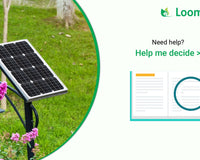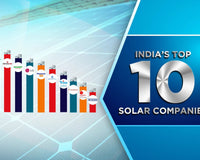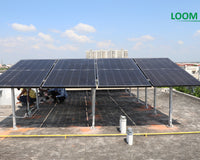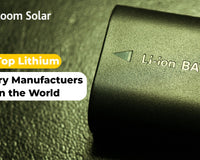On-Grid Solar Inverter and Off-Grid Solar Inverter are two types of inverters used in solar power systems, and they serve different purposes based on the type of solar installation they are connected to. Here's the difference between the two:
On-Grid Solar Inverter (Grid-Tied Inverter)
An on-grid solar inverter is designed to work in conjunction with the utility grid. It converts the DC (direct current) electricity generated by solar panels into AC (alternating current) electricity, which can be directly used by household appliances or fed back into the utility grid. Key characteristics of on-grid solar inverters include:
Grid Connection: On-grid inverters require a connection to the utility grid. This means that they can't operate independently and rely on the grid for power supply and stability.
Net Metering: When your solar panels produce more electricity than you're using, the excess power can be fed back into the grid. Many utility companies offer net metering, which allows you to receive credits or compensation for the excess power you contribute to the grid.
No Battery Backup: On-grid systems typically do not have battery backup. This means that if the grid goes down, the solar panels won't provide power to your home unless you have additional equipment like a backup generator or battery storage system.
Efficiency Optimization: On-grid inverters are optimized for efficiency and synchronization with the grid's frequency and voltage, ensuring that the generated power is seamlessly integrated into the overall grid network.
Off-Grid Solar Inverter
An off-grid solar inverter is designed for standalone solar systems that are not connected to the utility grid. These systems are commonly used in remote areas or locations where grid electricity is unreliable or unavailable. Key characteristics of off-grid solar inverters include:
No Grid Connection: Off-grid inverters operate independently from the utility grid. They convert solar-generated DC power into usable AC power for local consumption without any grid interaction.
Battery Storage: Off-grid systems usually incorporate battery storage to store excess energy generated during sunny periods. This stored energy is then used to power the household when the sun isn't shining, such as during the night or cloudy days.
Energy Management: Off-grid systems require careful energy management to ensure that the generated electricity meets the household's needs without depleting the battery reserves.
Self-Sufficiency: Off-grid systems are designed to provide electricity even when the grid is unavailable. This makes them suitable for areas with unreliable grid infrastructure or in situations where complete energy independence is desired.
Conclusion
In summary, the main difference between on-grid and off-grid solar inverters lies in their connection to the utility grid and their ability to operate independently. On-grid inverters are used in systems that are connected to the grid and can export excess power, while off-grid inverters are used in standalone systems with battery storage to provide power in the absence of grid supply. When choosing a solar inverter, consider factors like capacity (how much energy it can store), depth of discharge (how much you can use before recharging), cycle life, efficiency, upfront costs, and any maintenance requirements. It's recommended to consult with solar energy professionals or battery experts to determine the best fit for your specific solar energy storage needs.












